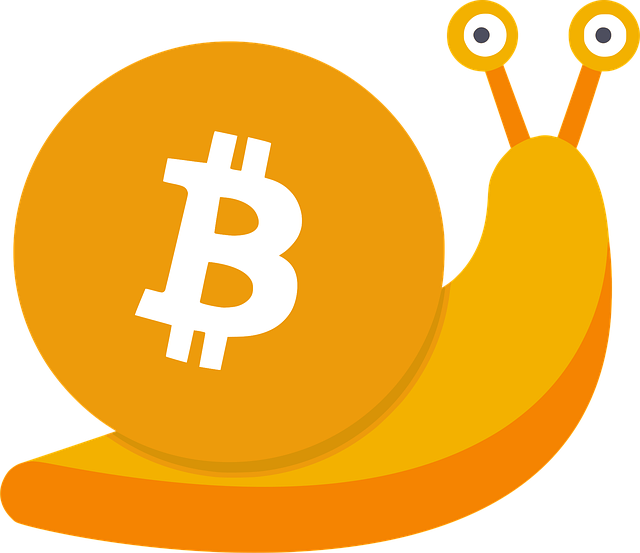Why Is Bitcoin Higher Than XRP? An In-Depth Analysis of Market Valuation Disparities
Author: Jameson Richman Expert
Published On: 2025-08-07
Prepared by Jameson Richman and our team of experts with over a decade of experience in cryptocurrency and digital asset analysis. Learn more about us.
The notable valuation disparity between Bitcoin (BTC) and XRP remains a subject of keen interest among investors, traders, and industry analysts. While both are leading cryptocurrencies, their differing market prices reflect a complex interplay of technological features, market perception, regulatory landscape, supply mechanisms, and utility. This comprehensive exploration aims to provide a nuanced understanding of these core factors, examining why Bitcoin commands a significantly higher market price than XRP and how these elements influence their respective market capitalizations. By delving into detailed technical, economic, and legal aspects, this article equips readers with a deeper perspective on the valuation dynamics within the cryptocurrency ecosystem.

Fundamental Technological and Structural Differences
Bitcoin (BTC), introduced in 2009 by the pseudonymous Satoshi Nakamoto, pioneered the concept of decentralized digital currency based on blockchain technology. Its architecture relies on a proof-of-work (PoW) consensus mechanism, where miners validate transactions by solving complex cryptographic puzzles, ensuring network security and immutability. Bitcoin's protocol enforces a strict cap of 21 million coins, with the issuance rate halved approximately every four years through “halving” events. These halving cycles create a predictable, decreasing supply growth, fostering a perception of scarcity that underpins its store-of-value narrative. Additionally, Bitcoin’s extensive network decentralization, high number of active nodes, and robust security model contribute to its resilience and trustworthiness, making it a preferred asset for institutional and retail investors alike.
In contrast, XRP, created by Ripple Labs in 2012, was designed primarily to facilitate fast, cost-effective cross-border payments. XRP operates on the XRP Ledger (XRPL), a distributed ledger that employs a consensus protocol called the Ripple Protocol Consensus Algorithm (RPCA). Unlike Bitcoin's PoW, XRP’s consensus mechanism involves a set of trusted validators that confirm transactions within seconds, enabling high throughput and minimal transaction costs. XRP’s supply is pre-mined, with a fixed total of 100 billion tokens, of which Ripple Labs retains a significant portion—often around 55 billion—while the rest circulates freely. The design emphasizes operational efficiency, scalability, and interoperability with existing banking infrastructure, positioning XRP as a bridge currency for international settlements rather than a traditional store of value.
Market Perception, Adoption, and Ecosystem Maturity
Market perception significantly influences valuation metrics. Bitcoin’s status as the first cryptocurrency, combined with its decentralized ethos and global recognition, positions it as digital gold—a hedge against inflation and systemic economic instability. Its widespread acceptance by institutional investors, hedge funds, and retail traders has fostered a perception of safety and legitimacy. Major financial institutions have integrated Bitcoin into their portfolios, and its inclusion in traditional financial products like ETFs and futures markets further amplifies its valuation and market depth.
XRP, however, occupies a more niche perception, mainly associated with enterprise solutions for cross-border payments. Despite strategic partnerships with financial institutions, banks, and central banks, XRP faces skepticism due to ongoing regulatory uncertainties—most notably the lawsuit filed by the U.S. Securities and Exchange Commission (SEC) in December 2020. The SEC alleges that XRP was sold as an unregistered security, leading to delistings from major exchanges, limited liquidity, and legal hurdles. These regulatory challenges diminish XRP’s broader adoption potential and dampen investor confidence, thereby impacting its market capitalization relative to Bitcoin. Moreover, XRP’s centralized token distribution and the significant holdings by Ripple Labs contribute to perceptions of centralization, which contrast sharply with Bitcoin’s decentralized ethos.
Regulatory Landscape and Legal Challenges
Regulatory frameworks are crucial in shaping the valuation landscape of cryptocurrencies. Bitcoin benefits from a relatively clearer regulatory environment; its decentralized structure and recognition as a commodity in many jurisdictions—including the United States, where the Commodity Futures Trading Commission (CFTC) classifies it as such—have facilitated its integration into mainstream financial systems. Regulatory clarity has led to increased institutional participation, exchange listings, and the development of derivative markets, all of which support higher market valuations.
Conversely, XRP’s legal entanglements significantly influence its market perception. The SEC’s lawsuit claims XRP to be an unregistered security, creating a cloud of legal uncertainty that has led to exchange delistings, trading restrictions in certain regions, and heightened investor caution. The outcome of this legal battle remains uncertain; a favorable ruling for Ripple could unlock significant value and restore market confidence, while an adverse decision could severely diminish XRP’s utility and valuation. Regulatory risks, especially those stemming from enforcement actions and evolving legal standards, continue to be a critical differentiator between XRP and Bitcoin’s market positions.

Supply Dynamics, Scarcity, and Market Impact
Supply characteristics fundamentally impact asset scarcity and valuation. Bitcoin’s fixed supply cap of 21 million coins, combined with the halving process, enforces a decreasing issuance rate, creating a deflationary supply schedule that has historically driven prices higher during supply-tightening periods. This scarcity model positions Bitcoin as a hedge against inflation and a safe haven asset, attracting long-term investors seeking store-of-value properties.
In contrast, XRP’s pre-mined structure entails no scarcity mechanism akin to Bitcoin’s. Although the total supply is capped at 100 billion tokens, the large proportion held by Ripple Labs and its insiders—often unreleased—can influence circulating supply and market dynamics. Periodic token releases, sales, or escrow releases by Ripple Labs can exert downward pressure on XRP’s price, especially during periods of increased selling activity. The centralization of XRP holdings and the control over supply flow contribute to higher market volatility and comparatively lower valuation multiples, as investors weigh the risks associated with potential sell-offs and supply manipulation.
Technological Innovations and Use Cases
Bitcoin’s ongoing technological development has set industry standards, emphasizing security, decentralization, and resilience. Its blockchain architecture has inspired numerous innovations, including second-layer solutions like the Lightning Network, which aims to enable instant, low-cost transactions and scalability. Such advancements are expected to foster increased adoption among merchants and consumers, potentially leading to higher valuation and utility over time.
XRP’s technological focus centers on operational efficiency for cross-border payments. Ripple’s innovations include escrow mechanisms to control token release, interoperability protocols to connect different ledgers, and partnerships with financial institutions to expand real-world utility. Ripple’s efforts to develop RippleNet, a global payments network, aim to increase XRP’s adoption as a bridge currency, thereby potentially elevating its market value as its utility and integration deepen within the international remittance ecosystem.
Market Liquidity, Trading Volume, and Market Stability
Liquidity and trading volume are vital for market stability and effective price discovery. Bitcoin benefits from unparalleled liquidity, supported by extensive trading activity across major global exchanges such as Binance, Coinbase, Kraken, and others. High liquidity reduces volatility, allows for large trades with minimal market impact, and reinforces Bitcoin’s dominance in the crypto market.
XRP, while actively traded, has comparatively lower liquidity pools, which can lead to sharper price swings during market stress or regulatory events. Limited exchange support and regional trading restrictions further hinder liquidity growth. Enhancing liquidity infrastructure, increasing exchange listings, and expanding regional availability are critical steps that could help XRP achieve higher market capitalization and stabilize its price fluctuations.

Investor Sentiment, Speculation, and Market Dynamics
Investor sentiment remains a primary driver of cryptocurrency prices. Bitcoin’s long-standing reputation, mainstream media coverage, and acceptance by institutional investors foster a positive outlook that sustains higher prices. During bull markets, speculative trading amplifies price rallies, often leading to rapid upward movements and subsequent corrections. Institutional interest, including investments from publicly traded companies and hedge funds, further bolsters Bitcoin’s perceived legitimacy.
XRP’s price is more sensitive to legal and regulatory developments. Court rulings, enforcement actions, or positive settlement news can induce rapid price swings. Despite these challenges, XRP’s utility narrative and ongoing development efforts help maintain investor interest, although with higher volatility compared to Bitcoin. The perception of XRP as a utility token rather than a store of value influences its market behavior and investor base.
Practical Guidance for Investing in Bitcoin and XRP
Prospective investors should prioritize security, transparency, and reliability when choosing trading platforms. Reputable exchanges such as Binance, MEXC, Bitget, and Bybit offer secure trading environments with robust security protocols, competitive fees, and advanced trading tools. Conduct thorough research on platform security, fee structures, and regulatory compliance before trading.
Given the inherent volatility of cryptocurrencies, prudent risk management, portfolio diversification, and continuous education are essential. Use stop-loss orders, stay updated on market trends, and avoid investing more than you can afford to lose to navigate this dynamic landscape effectively.
Conclusion
The valuation gap between Bitcoin and XRP is rooted in a multifaceted array of factors. Bitcoin’s decentralized architecture, fixed supply, broad institutional acceptance, and status as a digital gold underpin its higher market capitalization. Conversely, XRP’s utility in cross-border payments, regulatory challenges, and pre-mined supply contribute to its comparatively lower valuation. As technological innovations, legal outcomes, and regulatory landscapes evolve, these assets’ relative positions are likely to shift. For investors, understanding these complex dynamics is crucial for making informed decisions and anticipating future trends within the rapidly changing digital asset market landscape.